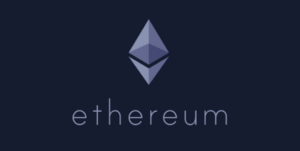Preparing for Bitcoin Integration: Institutional Networks Gear Up
A recent development in the world of cryptocurrency has seen Bitcoin exchange-traded funds (ETFs) making a significant impact since their launch. Shane Neagle, Editor In Chief at The Tokenist, highlights the success of Bitcoin ETFs, which have amassed a staggering $309.53 billion in volume within just six months of their introduction. The rapid adoption of spot-traded Bitcoin ETFs is evident as they attracted $4 billion on their first day of trading, surpassing the previous record set by Gold ETF (GLD), which took three days to reach $1 billion in inflows.
Bitcoin, a relatively new asset compared to traditional gold, has proven its relevance in the digital era. The increasing trend indicates that Bitcoin is better suited for the modern age. Jay Jacobs, BlackRock’s Head of Thematic & Active ETFs, emphasizes Bitcoin’s potential as a hedge against geopolitical and monetary risks. Central banks’ manipulation of the money supply has led to various challenges, including inflation and budgetary deficits, making Bitcoin an attractive alternative due to its decentralized nature and limited supply compared to gold.
With the institutionalization of access to digital gold through Bitcoin ETFs, attention turns to ensuring the continued growth of this trend. Network reliability is crucial for the scalability of the Bitcoin network, which currently processes around 412k transactions per day. To accommodate institutional demand, network components need to be enhanced, including software, servers, and internet connections.
Scalable blockchain solutions, such as IBM Blockchain and Visa’s Universal Payment Channel framework, are vital for facilitating interactions within the Bitcoin ecosystem. These solutions enable seamless integration with international banking networks like SWIFT, creating a robust infrastructure for institutions engaging with Bitcoin.
Dependable servers play a critical role in supporting blockchain solutions, with options ranging from internal servers to external networks like the Canton Network. By leveraging atomic settlements, real-time transactions across various blockchain applications become feasible, allowing businesses to focus on core operations rather than IT infrastructure management.
Internet connectivity is essential for maintaining communication between nodes in the blockchain network. Strategies like redundancy and failover mechanisms ensure continuous validation of transactions and settlements. Solutions like the Canton Network incorporate redundancies and load balancing to enhance network performance and stability.
The transition to sustainable energy sources is a key focus for the Bitcoin network, with over 50% of mining operations powered by renewable energy. Efforts to balance power networks and integrate Bitcoin mining as a Controllable Load Resource highlight the industry’s commitment to sustainability and grid stabilization.
In conclusion, the success of Bitcoin ETFs underscores the growing importance of cryptocurrency in the financial landscape. With advancements in network infrastructure, blockchain solutions, and sustainable energy practices, Bitcoin continues to pave the way for a digital future.





